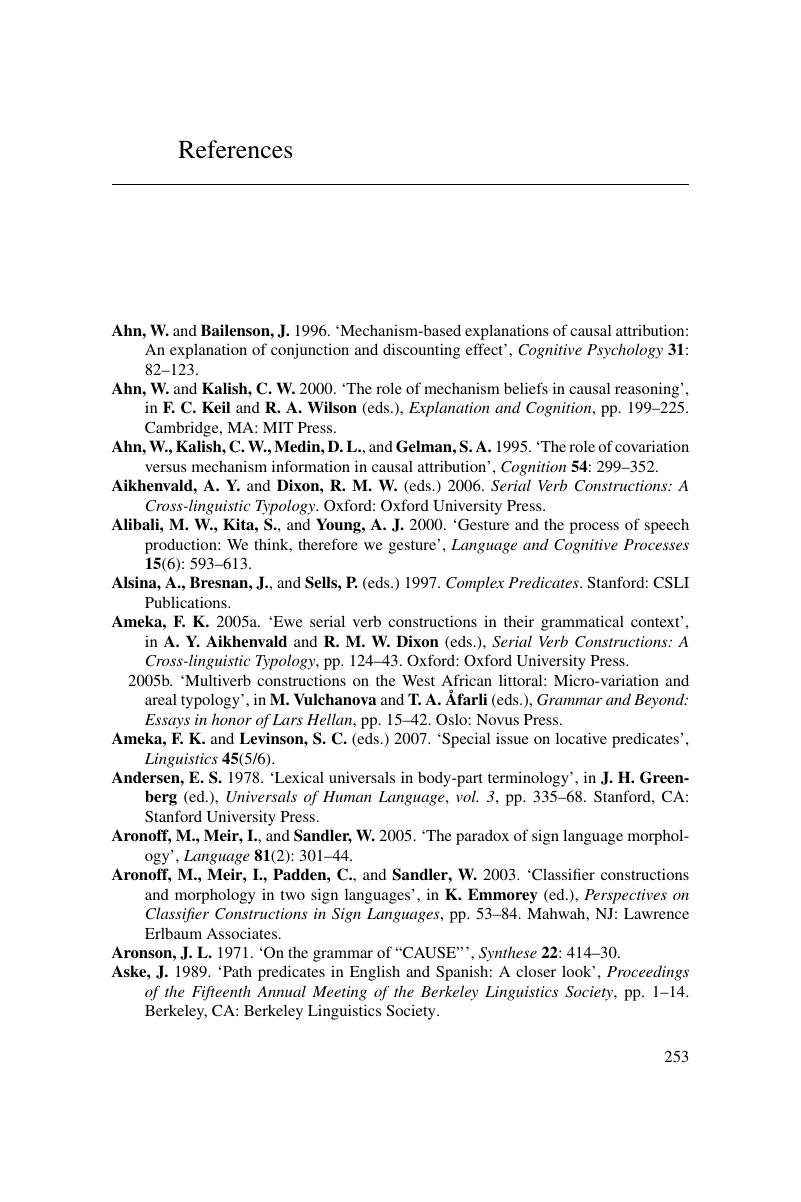Book contents
- Frontmatter
- Contents
- Figures
- Contributors
- Acknowledgments
- 1 On representing events – an introduction
- 2 Event representation in serial verb constructions
- 3 The macro-event property
- 4 Event representation, time event relations, and clause structure
- 5 Event representations in signed languages
- 6 Linguistic and non-linguistic categorization of complex motion events
- 7 Putting things in places
- 8 Language-specific encoding of placement events in gestures
- 9 Visual encoding of coherent and non-coherent scenes
- 10 Talking about events
- 11 Absent causes, present effects
- References
- Index
- References
References
Published online by Cambridge University Press: 01 March 2011
- Frontmatter
- Contents
- Figures
- Contributors
- Acknowledgments
- 1 On representing events – an introduction
- 2 Event representation in serial verb constructions
- 3 The macro-event property
- 4 Event representation, time event relations, and clause structure
- 5 Event representations in signed languages
- 6 Linguistic and non-linguistic categorization of complex motion events
- 7 Putting things in places
- 8 Language-specific encoding of placement events in gestures
- 9 Visual encoding of coherent and non-coherent scenes
- 10 Talking about events
- 11 Absent causes, present effects
- References
- Index
- References
Summary

Information
- Type
- Chapter
- Information
- Event Representation in Language and Cognition , pp. 253 - 277Publisher: Cambridge University PressPrint publication year: 2010
